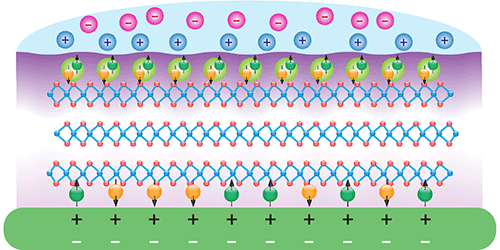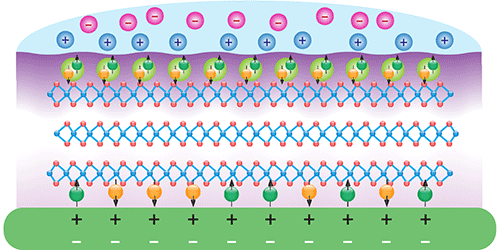The Dichalcogenide Gets Two Faces
Like graphene, transition-metal dichalcogenides (TMDCs) are materials that can, with sticky tape and patience, be thinned down to a few atomic layers. This feature, together with their superior electronic and optical properties, makes TMDCs promising components for ultracompact devices. Jianting Ye of the University of Groningen, Netherlands, and his colleagues have now shown that they can induce two distinct behaviors—superconductivity and metallic conduction—in adjacent atomic layers of an initially semiconducting TMDC flake.
To obtain this composite behavior, the researchers used strong electrostatic fields, which they applied at the surface of the material through a dielectric film, or “gate.” Depending on its polarity, the gate field will draw in or push away conducting charge carriers within a few atomic layers of the surface. In 2012, Ye and his colleagues used this approach to induce superconductivity in a thin flake of the semiconductor , the most studied TMDC. The key was to use an ionic-liquid dielectric, which produces sufficiently strong fields to achieve the charge density needed for superconductivity to occur.
In their new work, Ye and his team sandwiched a five-layer flake of between an ionic-liquid gate (on top) and a conventional solid-state gate (below). They used charge-transport measurements to confirm that the topmost layer of the flake became a superconductor and coexisted with a high-mobility metallic state in the remaining bottom layers. They also showed that they could use the bottom gate to control the electronic interaction between the superconducting and metallic layers and even to suppress the superconductivity. This latter effect could be the basis for a new type of superconducting transistor.
This research is published in Physical Review Letters.
–Jessica Thomas
Jessica Thomas is the Editor of Physics.





